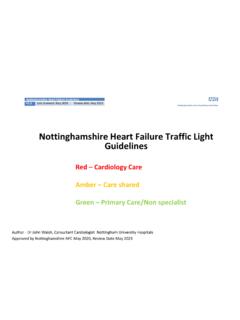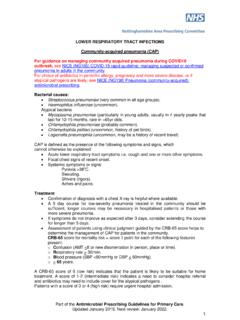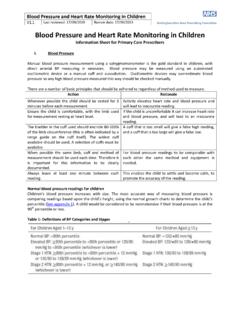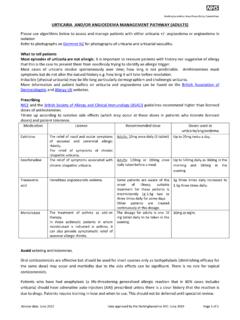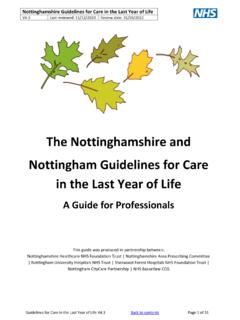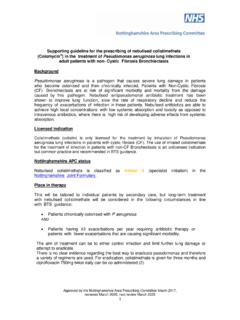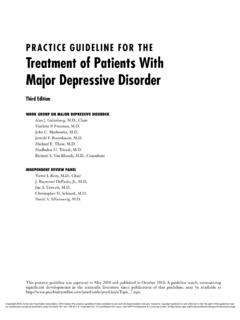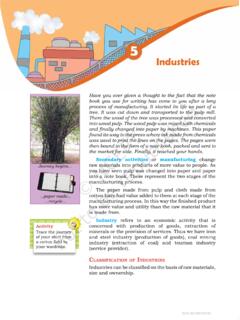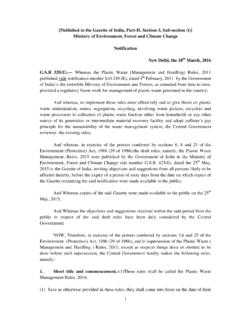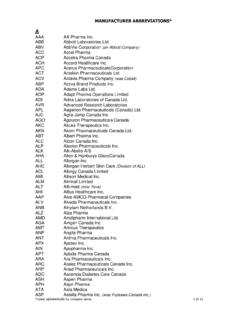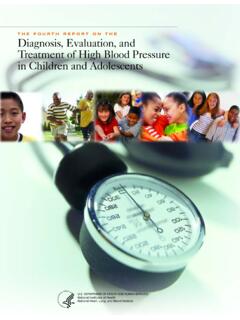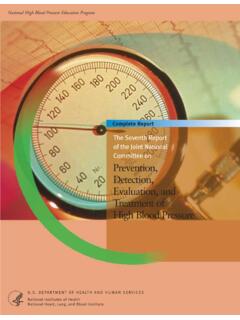Transcription of Buccal Midazolam Supporting Guideline v1 - NottsAPC
1 Buccal Midazolam in paediatrics Last reviewed: May 2023 Review date: May 2026 1 Nottinghamshire Health Community Guideline for the use of Buccal Midazolam (5mg/ml and 10mg/ml) in patients under paediatric care Introduction Buccal Midazolam is an effective, more socially acceptable and well-tolerated alternative to rectal diazepam, recommended as first-line treatment in children, young people and adults with prolonged or repeated seizures in the community 1 and indications as directed by the specialist. GPs are supported in prescribing it to patients on the specific recommendation of a specialist. Changes to the concentration should not be made routinely without specialist involvement, unless under an approved switching program. Buccal Midazolam products There are two main Buccal Midazolam products in common use. 1. Buccolam : Pre filled oral syringes FIRST LINE. 5mg Midazolam (as hydrochloride) per ml of sugar free solution ( 5mg/ml).
2 Buccolam is licensed for infants, toddlers, children and adolescents (from 3 months to 17 years) for the treatment of prolonged, acute, convulsive epileptic seizures. It is available as four different doses: in 5mg in 1ml in 10mg in 2ml Note: Buccolam syringes are not graduated, there are no markings to allow administration of part of a syringe. As a consequence, the correct dose-specific syringe must be prescribed and supplied 2. Epistatus : An oromucosal liquid containing 10mg Midazolam (as maleate) in 1ml of sugar free syrup ( 10mg/ml). 10mg/ml 5ml bottle (with four oral 1ml syringes in the packaging) unlicensed product This should be reserved for patients who require doses not compatible with the Buccolam prefilled syringes Epistatus also now comes in prefilled syringes. It is important that patients are always issued with the same brand of Midazolam because of different concentrations. Patients should have an emergency plan that matches their brand of Midazolam and carers should have accessed the appropriate teaching for that brand.
3 It is important to note Epistatus is twice as strong as Buccolam . This has potential for administration errors, particularly if switching between brands2. The initiating clinician should clearly specify the brand to be used within the patient s care plan and within any correspondence to the GP. Buccal Midazolam in paediatrics Last reviewed: May 2023 Review date: May 2026 2 Place in therapy Treatment will be tailored to individual patients, but in general Buccal Midazolam is used as required for convulsive status epilepticus (convulsive epileptic seizures with loss of consciousness lasting 5 minutes or more). Also used for a prolonged series of epileptic seizures continuing for 5 or 10 minutes or more without the patient waking up and coming round in between. It is sometimes used for less severe focal epileptic seizures that are building up over 20-30 minutes or with impaired consciousness. Stopping a generalized convulsive epileptic seizure promptly after 5 minutes with Buccal Midazolam is safe and effective, and supported by NICE guidance.
4 This is likely to reduce the chance of seizures progressing to more refractory status epilepticus. Buccal Midazolam should only be prescribed for use in the community for children and young people who have had a previous episode of prolonged or serial convulsive seizures1. Administration guidance It is recommended that the following individuals administer the required dose of Buccal Midazolam : A doctor A dentist A registered nurse or dental nurse (in accordance to the prescriber s directions) Non-healthcare professionals (including a named carer, teacher or parent) who has attended appropriate training in the administration of Buccal Midazolam . The specialist prescriber, clinical nurse specialist, or trained community nurse will provide appropriate training, and a concentration-specific care plan with the indications, details of administration, dose and other individualised advice1. For infants aged less than 6 months, treatment should only be in hospital, where monitoring is possible and resuscitation equipment is available.
5 Dose This will be tailored to each patient but in general doses between mg/kg up to a maximum single dose of 10 mg are used in children3. : Because formulations of Midazolam are available as 5mg/ml (Buccolam ) or 10mg/ml (Epistatus ), great care is required to maintain consistency and educate parents and carers so that under or overdosing is avoided. Prescribe by brand to avoid inadvertent changing of concentrations for patients. Prescriptions should always be accompanied by appropriate training by a health professional with expertise in epilepsy and documentation that supports the chosen product. Age of patient Dose of Buccal Midazolam (1st and 2nd doses) 0 - 2 months (in hospital only) (max per dose ) 3 6 months (in hospital only) 7 months - <1 year 1 - 4 years 5mg 5 - 9 years Buccal Midazolam in paediatrics Last reviewed: May 2023 Review date: May 2026 3 10 - 17 years 10mg The dose must always be prescribed in mg and in ml 2.
6 For weight-based doses, the dose must be measured in an oral syringe, which is not compatible with IV devices3. Prescription by weight ( mg/kg) rather than age may be more appropriate for some children aged over 3 months for example in weights significantly more or less than that of an average child of the same age. This will be directed by the specialist. The safety and efficacy of Midazolam in children aged 0 to 3 months has not been established. No data are available. Doses given for 0 to 3 months are unlicensed4. The first dose This may need to be given in a community setting. If the patient has never been given Buccal Midazolam (or a similar nasal, Buccal , or intravenous benzodiazepine) before, the parents or carers may have been advised to call the emergency services (ambulance or para-medic) once the dose is given in case of respiratory depression. There is no evidence that respiratory depression is more or less common with Buccal Midazolam than with rectal diazepam5.
7 Parents and carers of patients at risk of prolonged convulsive epileptic seizures may also be trained in age-appropriate Basic Life Support. Repeated doses In general, a second dose is not often used in community setting within a 24-hour period. Some individuals however may be advised that after initial recovery a further dose may be given 6 or more hours later if they have a second prolonged seizure. This will be on advice of the specialist on an individual patient basis. In clinical settings ( medical facilities or hospitals) a second dose is given no sooner than 10 minutes after the first if the seizure continues. Occasionally this might be advised in special circumstances in a community setting. Contraindications Known hypersensitivity to the active substance, benzodiazepines or to any of the excipients, severe hepatic impairment, severe respiratory insufficiency, sleep apnea syndrome4, CNS depression, comprised airway, severe respiratory depression5.
8 Adverse effects Drowsiness (may persist for several hours after administration). Agitation, restlessness, and disorientation have been reported, although these are rare. Respiratory depression in 5-10% of cases: rarely clinically significant. Buccal Midazolam in paediatrics Last reviewed: May 2023 Review date: May 2026 4 Costs (Prescribe by brand) Product Buccolam 5mg/ml Licensed product Epistatus 10mg/ml Unlicensed product Cost Cost for four dose units (ex VAT): (Yellow) 82 (Blue) (Purple) 89 10mg/2ml (Red) Cost (ex VAT) 1 x 5ml bottle (as this product is unlicensed the cost may be variable in primary care) Manufacturer Shire Pharmaceuticals Ltd Hampshire International Business Park, Chineham, Basingstoke, Hampshire, RG24 8EP 01256 894 000 Special Products Ltd Unit 16 Trade City, Avro Way, Brooklands Business Park, Weybridge , Surrey, KT13 0YF 01932 690325 Patient information Medicines for children Midazolam for stopping seizures Children s Epilepsy Workstream in Trent Buccolam pre-filled syringes ( Buccal Midazolam , 5mg/ml) The electronic Medicines Compendium Buccolam Package leaflet Information ( Legal category On January 1st 2008, the legal classification for Midazolam changed from a Schedule 4 CD (Controlled Drug) to a Schedule 3 CD6.)
9 All prescriptions for Midazolam must satisfy the prescription requirements to be valid and include details of the dose, form, strength, directions for use and total quantity (in both words and figures). References 1. National Institute for Health and Care Excellence. Epilepsies: diagnosis and management. NICE; 2012. Last updated: 11 February 2020 2. NPSA. Prevention of harm with Buccal Midazolam [Internet]. SIGNAL. 2012. Available from: 3. British National Formulary. Midazolam [Internet]. [cited 2017 Apr 24]. Available from: #/search/bnf/ Midazolam 4. European Medicines Agency. Buccolam [Internet]. 2016 [cited 2017 Apr 24]. Available from: Buccal Midazolam in paediatrics Last reviewed: May 2023 Review date: May 2026 5 5. McIntyre J, Robertson S, Norris E, Appleton R, Whitehouse WP, Phillips B, et al. Safety and efficacy of Buccal Midazolam versus rectal diazepam for emergency treatment of seizures in children: a randomised controlled trial.
10 Lancet (London, England) [Internet]. 2005;366(9481):205 10. Available from: 6. Home Office. Controlled drugs list [Internet]. Drug misuse and dependency. 2016 [cited 2017 Apr 25]. Available from: Original Authors (05/2014) Dr Colin Dunkley, Consultant Paediatrician, Sherwood Forest Hospital NHS Trust Dr William Whitehouse, Consultant Paediatrician, Nottingham University Hospitals NHS Trust Reviewed and updated (05/2017) Louise Lester, Specialty Registrar in Public Health, Nottingham City Council Reviewed and updated (28/02/2020) Laura Catt, Prescribing Interface Advisor, Nottingham and Nottinghamshire CCG. Version Control Buccal Midazolam in Paediatrics Version Author(s) Date Changes Irina Varlan Medicines Optimisation Interface Pharmacist May 2023 -Added wording around Epistatus also being available in prefilled syringes; -prolonged seizures now being called status if over 5 minutes; -Added version control and standard header.
